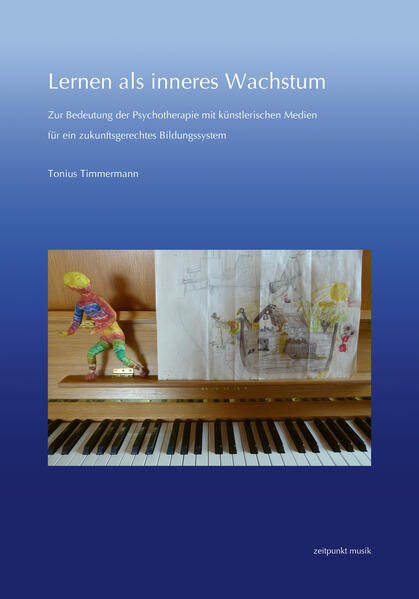Unser Bildungssystem ist einseitig an der Förderung rationaler Intelligenzformen orientiert, gibt zu viel Wissen vor und erzeugt von Früh an Leistungsdruck durch vergleichende und hierarchisierende Bewertung und Zensur. Dadurch wird vielfach Angst und ein schlechtes psychosoziales Klima bewirkt. Ein erweiterter, ganzheitlicher Bildungsbegriff würde auch leistungsfreie, schöpferische Räume anbieten, in denen Lernende in beziehungsorientierter Begleitung durch experimentelles sich Erforschen besser in Resonanz mit ihrem eigenen Wesen kommen und ihre jeweils einmaligen persönlichen Kompetenzen in ihrer eigenen Zeit entwickeln können. Ganzheitlich bilden heißt, alle Formen von Intelligenz und Erkenntnisgewinn berücksichtigen und beziehungsorientiert individuations- und gemeinwohlorientierte Entwicklungsprozesse zu fördern und damit ein inneres Wachstum zu initiieren.
In der Psychotherapie mit künstlerischen Medien, in Körper-, Bewegungs-, Tanz-, Musik-, Kunst- , Mal, Gestaltungs-, Theater-, Biblio- und Poesietherapie, wurden Vorgehensweisen für verschiedenste Altersstufen entwickelt, erprobt und erforscht, die auch nonverbal, also unabhängig von Sprachkompetenzen psychosoziales Lernen ermöglichen und Gemeinschaftserleben, Zugehörigkeit, Integration und Beziehungskompetenzen fördern. Beispielhafte Projekte zeigen, dass dies die ideale Voraussetzung für die Schaffung von Lernfähigkeit und Leistungsbereitschaft ist.
Our education system works at the basis of society for future developments. However, it is one-sidedly oriented towards the promotion of rational forms of intelligence and little towards creative human education. As a rule, artistic subjects are only marginal phenomena. Prescribed knowledge dominates instead of responding to the curiosity of children and young people.
There is a lack of performance-free spaces that serve personal development and thus arouse genuine interest. Such spaces exist in the various psychotherapies with artistic media. These are described and then reflected on how they can be modified and used in educational areas. Simple but effective approaches have been developed, tested and researched for a wide range of age groups, which can initiate and unfold personal and social development processes. This is illustrated by their presentation in terms of objectives and attitudes. The specific practices are listed and described in the appendix.
You don't have to be pathologically conspicuous to use them. Non-verbal offers could have a healing effect at the grassroots level of society by moving, touching and - particularly important today - promoting a sense of belonging, community experience, integration and relationship skills, regardless of language level. As exemplary projects show, this is the ideal prerequisite for creating an atmosphere in which learning ability and motivation can flourish. Pressure to perform through hierarchical evaluation and comparison often causes anxiety and a poor psychosocial climate. However, a benevolent and relationship-oriented atmosphere is the positive basis for motivation to learn.
An expanded, holistic concept of education would take into account all forms of intelligence and knowledge acquisition. By experimenting with artistic media and accompanying reflective group processes, learners can better resonate with their own nature and explore and develop their own unique personal skills.
With adequate personnel and material resources and appropriate training and further education, proven approaches from physical, movement, dance, music, art, painting, design, theater, bibliotherapy and poetry therapy could be transferred to a wide variety of educational areas and integrated into the curriculum, modified in each case according to the situation.
Jetzt reinlesen:
Inhaltsverzeichnis(pdf)




































